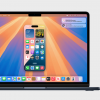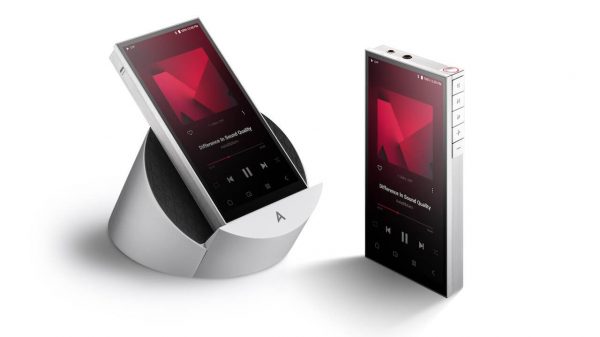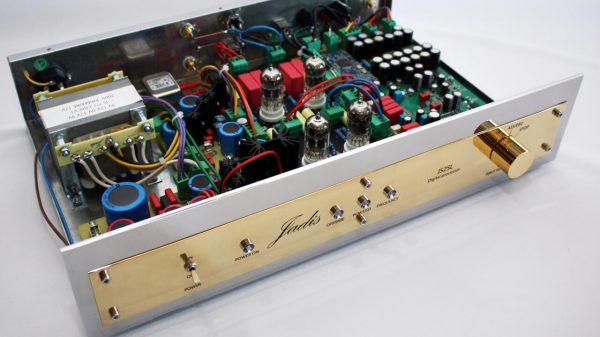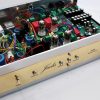Apple recently put the iPod out to pasture and whilst it would be pretentious to suggest that it was the worst thing that happened to audio going back to the launch of DCC and the Tice TPT Clock (I won’t mention which stereo magazine promoted that nonsense), the reality is that the best-selling DAP (Digital Audio Player) of all-time did have an influence on Hi-Res Audio and it’s unlikely that streaming platforms such as TIDAL and Qobuz would have a customer base in 2023 had the iPod and iTunes not created a generation of low resolution audio listeners. Hi-Res audio was a form of pushback — the issue is that 99% of the music listening population has no idea what it means.
Are we the only ones who find it strange that “Hi-Res Audio” branding appears on the packaging of audio components that don’t offer high resolution audio as a feature?
Unless you’re selling wireless loudspeakers that support hi-res streaming — why are you putting that on your packaging?
The same question must be asked of headphone manufacturers who are putting that label on every single pair of wireless IEMs and headphones; including ones that don’t even support anything above 16-bit/44.1kHz PCM.

What is Hi-Res Audio?
Hi-Res Audio, also known as High-Resolution Audio, refers to a collection of digital audio formats that have a higher sampling frequency and/or bit depth than the standard 16-bit 44.1kHz (CD-quality) audio format. The goal of Hi-Res Audio is to provide a listening experience that is closer to the original recording, with greater detail, clarity, and dynamic range.
Hi-Res Audio is typically considered to be audio that has a sample rate of 96kHz or higher and a bit depth of 24 bits or higher. Some Hi-Res Audio formats can even reach a sample rate of 192kHz and a bit depth of 32 bits, although these formats are less common. Some will argue that 16-bit/48.1kHz qualifies as Hi-Res Audio but I’m not sure that distinction is great enough to convince mainstream consumers of its validity.
32-bit/384kHz? When there is any music worth mentioning, we’ll include that as part of the conversation.
It’s important to note that Hi-Res Audio is not just about increasing the audio bitrate. The key is to capture and preserve as much detail as possible from the original recording, so that the listener can experience the music as close as possible to the way it was intended to be heard.
Hi-Res Audio is designed to provide a more accurate and detailed representation of the original recording, preserving the subtleties and nuances of the music that can be lost in the compression process of other audio formats like MP3.
It’s worth noting that not all high-resolution audio is created equal, and there are no established standards for what constitutes “Hi-Res” audio. However, there are organizations like the Digital Entertainment Group (DEG) and the Japan Audio Society (JAS) that have established guidelines for what qualifies.
To play Hi-Res Audio files, you’ll need an audio system that supports these higher-quality formats and a digital-to-analog converter (DAC) that can process the higher-resolution data.
DACs are integrated into a wide range of components including wireless headphones, wireless loudspeakers, wireless turntables, wireless IEMs, network amplifiers and streamers, computers, CD players, smartphones and tablets, Dongle DACs, DAPs, and integrated amplifiers.
Not all DACs are created equal and depending on the age of the chipset — they might only be able to decode up to 16-bit/44.1kHz — which is not high resolution audio.
High-Res Audio Formats?

There are several high-resolution audio formats, including:
- FLAC (Free Lossless Audio Codec): This is a popular open-source format that provides lossless compression, meaning that the audio is compressed without any loss of quality. FLAC files typically have a bit depth of 16 or 24 bits and a sample rate of 44.1kHz to 192kHz.
- ALAC (Apple Lossless Audio Codec): This is a proprietary format developed by Apple for use in their products. Like FLAC, ALAC provides lossless compression and supports high-resolution audio with bit depths of 16 or 24 bits and sample rates up to 192kHz.
- WAV (Waveform Audio File Format): This is a popular and widely used format that supports high-resolution audio with bit depths of up to 32 bits and sample rates up to 384kHz. WAV files are typically uncompressed, making them larger in file size but providing the highest quality audio.
- AIFF (Audio Interchange File Format): This is another popular and widely used format that is like WAV. It supports high-resolution audio with bit depths up to 32 bits and sample rates up to 384kHz and is also typically uncompressed.
- DSD (Direct Stream Digital): This is a proprietary format that was originally developed for Super Audio CD (SACD) and uses a different encoding method compared to traditional PCM audio formats. DSD uses a single-bit encoding system with a high sample rate (typically 2.8MHz or 5.6MHz) to provide a high level of audio quality.
These are some of the most common high-resolution audio formats. The choice of format will depend on your specific needs and the type of playback device you are using. Some devices may not support all these formats, so it’s important to check compatibility before purchasing high-resolution audio content.
DSD is the least popular format and generally only supported by high-end DAPs (Digital Audio Players), SACD Players, DACs, Dongle DACs, network amplifiers and streamers, and a very limited number of wireless loudspeakers.
None of the mainstream audiophile streaming platforms like TIDAL or Qobuz offer DSD encoded music and whilst it can be purchased and downloaded from audiophile music labels — the files are generally very large and better suited for DAPs with removable storage or high-end music servers like a Roon Nucleus.

Is Hi-Res Audio better?
Whether HI-Res Audio is better or not depends on various factors, such as the quality of your playback equipment and your personal preferences. In general, Hi-Res Audio provides a more accurate and detailed representation of the original audio recording, as it has a higher sampling frequency and bit depth compared to standard audio formats. This can result in a wider frequency range, deeper bass, and improved overall sound quality.
Additionally, the quality of the source material also plays a significant role in the perceived improvement of Hi-Res Audio. If the original recording was made with low-quality equipment or poor production techniques, upscaling it to Hi-Res Audio may not result in a significant improvement in sound quality.
Related Podcast: Dr. Mark Waldrep Debunks Hi-Res Audio Myths

Best Hi-Res Audio music streaming platforms?
There are several music streaming platforms that offer Hi-Res Audio content, including:
- TIDAL: TIDAL is one of the largest Hi-Res Audio streaming platforms, offering millions of tracks in high-resolution audio format, including FLAC, ALAC, and MQA. TIDAL also offers exclusive content, such as concerts and music videos, and supports offline playback.
- Qobuz: Qobuz is another popular Hi-Res Audio streaming platform, offering a wide selection of high-resolution audio tracks, including FLAC, ALAC, and DSD. Qobuz also offers detailed album information and editorial content, making it a great choice for music lovers.
- Deezer: Deezer offers a selection of Hi-Res Audio tracks, including FLAC and ALAC formats, with plans starting at a higher price point than its standard offering.
- Apple Music: Apple Music offers Hi-Resolution audio up to 24 bit at 192 kHz, although not all Apple devices can decode it without special adapters.
- Amazon Music HD: Amazon Music HD offers a large selection of Hi-Res Audio tracks, including FLAC and ALAC formats, and is included as part of an Amazon Prime membership.
- Hi-Fi Cast: Hi-Fi Cast is a newer player in the Hi-Res Audio streaming space, offering a large selection of high-resolution audio tracks, including FLAC, ALAC, and DSD.
Tip: Spotify does not offer any lossless or hi-res audio music. Spotify HiFi was announced in 2021, but never came to market.
It’s important to note that the availability of Hi-Res Audio content can vary between platforms, and some platforms may offer higher quality streams than others. When choosing a Hi-Res Audio streaming platform, it’s important to consider the selection of available content, the quality of the streams, and the price.
Related: WTF is a DAC?

















































Chris Hallett
February 19, 2023 at 5:22 am
“high resolution” digital audio is pointless. Standard CD quality digital audio isn’t just good enough, it’s better than the human ear could ever distinguish. It was specifically designed that way on purpose originally.
If you get sucked into woo and marketing bullshit, I feel sorry for you, but then the saying “a fool and his money are easily parted” has existed for centuries, long before there even was such a thing as audio playback.
Jim ramsey
April 17, 2023 at 3:19 pm
Old ears & damaged hearing coupled with the fact that most of my music listening is for background thru distributed audio makes hi-res unimportant for me. WTS, I perceived a difference, on my mid-level 5.1.2 system with Amazon hi-res vs Spotify free. Whether that difference was real or imagined matters not as I don’t listen often via that system. So, Spotify premium is ok until I upgrade my Yam avr and then I’ll go with Amazon Music.